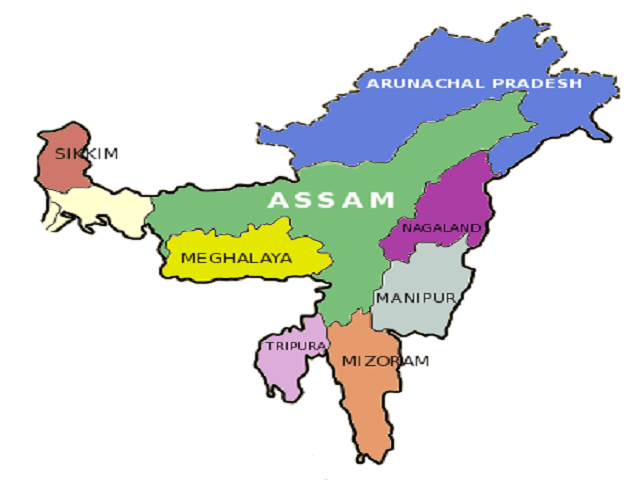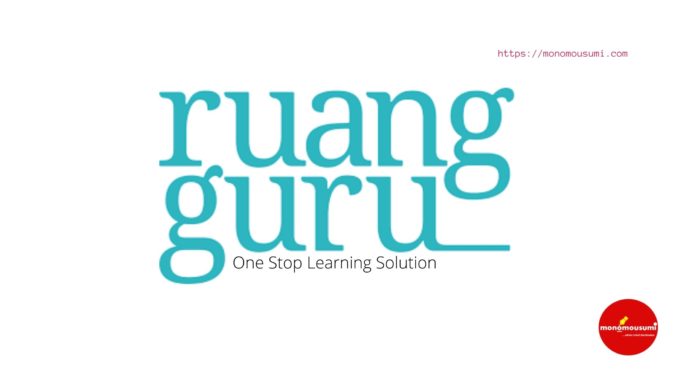North-east India and its neighbouring regions have been a disturbed area since the 1950s Naga Insurgency (known as the mother of the North-east insurgencies) challenged their integration into the Indian Union even before India became independent in 1947; the 6-year long Assam Agitation of 1985 against illegal Bangladeshi migrants; China’s annexation attempts in 1962, and now building villages in Arunachal and declining its recognition. And like a string of events, like the police comes to settle disputes, there is no doubt our good-old global policeman, the US, shall come to interfere in the multi-front conflict to gain strategic interests over its arch-enemy in the name of peace, restoration of order, conflict resolution, democracy, human rights, etc. since that has been the foreign policy of the US since World War 2: Arab Spring Revolutions(2011); Vietnam War(1955-1975), etc. are well-known examples.
This article throws light into the safety issues of NEI, taking the history of everything that could be involved into perspective, keeping in mind the other point of views, followed by a conclusion.
Insurgency and Ethnic Conflicts-In the 21st century, insurgent groups are driven by greed more than ideology
“The mushrooming of armed ‘Senas’ on caste and ethnic lines is a direct consequence of the polarisation of society”. Preoccupied with the daily battle of survival, the obvious choice of the victims of conflicts is: “if you cannot fight them, join them”; because the police are unable to protect them. “Polarisation on caste and religious lines can further reduce the credibility of the police in the minds of the people”. The police have stopped even submitting the charge sheets in insurgency-related cases. “United Liberation Front of Assam or ULFA is one of the insurgent groups that seek to establish an independent state of Assam with armed struggle in the Assam conflict”. There are reports that if the Centre fails to rein in Paresh Barua, its leader, ahead of the end of the Treaty of Yandaboo by 24th Feb 2026, the insurgent activities may see a surge. Senior ULFA leader Mrinal Hazarika says: “…Great Britain was forced to return Hong Kong to China after completion of 200 years in 1997…”. Another correspondent says: “It’s now or never. If India fails to deliver now, there could be no other chance, especially in the aftermath of Feb 24, 2026”. The fear that the illegal immigrant Bangladeshi Muslim population will one day dominate them is keeping many of the insurgent and secessionist movements alive.
“Differences create conflicts, the North-east is territorially organized in such a manner that ethnic and cultural specificities were ignored during the process of delineation of state boundaries” in the 1950s, giving rise to discontentment and assertion of one’s identity. The colonial leaders took nearly a century to annex the entire region, and administered the hills as a loose ‘frontier area’, with the result, that large parts of the “North-eastern hill areas never came in touch with the principle of a central administration”. Interestingly, 99% of the North-east’s boundaries are international and only 1% is domestic boundary. Though the conflict in the region is mired with complex political-economic issues, such as, struggle over natural resources, migration-related issues, displacement, social exclusion, etc. according to Dr Clemens Spiess, “the politics of identity lie at the heart of the bigger part of the current conflict constellations in the North-east”. And although Modi’s Act-East policy paints optimistic pictures for the region, there are speculations that the impact of the increased introduction of market imperatives in the traditional society of the region would have an irreversible impact on the people’s culture and life and it would also lead to increased settlement of mainland people to the north-east, something that would just exacerbate the already existing problem. Dependence on the government by a large section for their survival sharpen these conflicts. “Ethnicity can become an important dimension of internal conflict when it becomes intertwined with other social, political and economic issues”. And even politicians have started to support such groups. They mouth nationalist slogans in Delhi but have no hesitation in collaborating with the insurgent groups in the state.
China’s Expansionist Arrogance-forms the Magna Carta of Communism
China’s disrespect for boundaries dates back to 27th April 1914 where it rejected, post-signing the draft of the ‘Shimla Tripartite Agreement’ between British India, Tibet and China. In 1949, the PLA annexed Xinjiang followed by Tibet in 1951. There are various methods that China has been employing to satisfy its expansionist appetite. In the recent scenario, it built a village in Arunachal Pradesh and “…never recognised the so-called Arunachal Pradesh…China’s development and construction activities within our own territory are normal. This is beyond reproach as it is in our territory.”
A provincial lawmaker of the Nepali Congress party claimed “Chinese troops had crossed the border and built nine concrete structures about 1km inside Nepal”. After the 1962 war, China has been increasingly occupying Indian land and now currently occupies more than 45,000 sq km of Indian territory in the erstwhile state of Jammu and Kashmir alone, not to mention Arunachal. India has been the rookie in playing the game when it imposed an economic blockade in Nepal on an ill-conceived issue in 2015, which happened at the cost of India’s clout in Kathmandu. “Naturally, China stepped in; consequences are now showing in the souring of Indo-Nepal relations”.
China lended $ 7 billion to Sri Lanka. Unable to repay the loan, Sri Lankan Government handed over the Hambantota port and 15,000 acres of land around it to China till the 22nd century.
The Maldivian Government leased out Islands of Feydhoo Finolhu to China until 2066 for $4 million where China established a military base. “Just a few hundred kilometres from India’s shore, China thus gained a strategic foothold along a critical commercial and military waterway”.
Bangladesh is a member of China’s Belt Road Initiative, pledging an investment of $38 billion, the highest ever promised to Bangladesh by a single country; announced a tariff exemption for 97% of exports from Bangladesh thereby increasing its influence in India’s neighbours.
Even India is dependent upon China(including Hong Kong) by $85 Billion.
The United States of America-the good-old global policeman
It doesn’t take a no-brainer to know that the US looks at China as a safety threat to Americans. Control over the Indian Ocean Region is key to China’s economic interests(80% of its energy requirements oil imports pass through the area), and so is America’s-to ensure uninterrupted supply of energy from the Persian Gulf, through the Indian Ocean, to the Pacific; and America doesn’t shy away from protecting its vital national interests. It also wants uninterrupted navigation and unimpeded commerce. Its strategies hinge on alliance-alignment-entente buildings in tandem along with containment, encirclement, and engagement, in areas where China’s actions and policies have started to pose an impediment.
What Do We Do Then?
Suppose, China invades Myanmar in the name of peace and democracy restoration to “fight” the military junta and gains control of entire Myanmar, then it already has increased its presence around India by 30%. Now, it starts funding NEI insurgents with modern weapons and logistics to seize the “Chicken’s neck”; supports the Muslim population in Assam for practising Jihad. There we are, insurgents, terrorists, and not to mention the multi-front attack the PLA is aiming through Bhutan, Nepal, J&K among eastern India. Now, the world community turns heads towards the situation, QUAD (Quadrilateral Security Dialogue) deploys its troops. Japan, India, China, the US, Australia, Myanmar, Bangladesh, three of which are nuclear powers, boil towards a world war.
Although, the above event is imaginary, it is not unrealistic either.
A bunch of factors play roles, shape events, and start revolutionary changes and people can seldom see it coming. If taken history as a learning experience, India’s conflict-handling hasn’t been very constructive. Its non-alignment policies without regard for the greater good, its annoying hook of Socialism- “equal sharing of miseries” in the words of Sir Winston Churchill, and the democratic world’s most unwanted historic ties with communal powers like Russia puts India worse than even Bangladesh in some respects. Its ways of delivering peace through delay and loopholing matters without a long-term strategy have started to show its effects. Wars and conflicts are never free of suffering, bloodshed, loss of loved ones; but if war is fought, the only option to “survive” and “live” is to win without compromise. India still lacks the capabilities and the tools to protect its citizens. Worse, the central government rarely would move a finger if the 1962 episode in northeast India be repeated. There is little hope its close ally Russia might support, as it has nothing to gain from weakening China or stopping China from accumulating more power and territory. In fact, both are communist superpowers against democratic India, so, friend or foe?
American interests lie towards the South-China sea, Taiwan, Japan, and South Korea. It would rarely care if China were to annexe North-east and even Myanmar because it has little to gain from that, strategically. And after it’s done, there is rarely any nation could do to stop China from inflicting communal torture to Indians. America is no longer the promoter of peace, democracy, it never was. Guantanamo bay; Muhammad Zia-ul-Haq of Pakistan, ISIS are some not unknown American creations of selfish intentions.
North-easterners are neither prepared nor supported. Its identity is lost in colonial shuffling, the languages are losing mouths, the culture is being contaminated and its existence is threatened by the very people of which it were part for most of history.
Our ignorance of the unknown is pulling us into the black hole of uncertainty and conflict. Our lack of knowledge, lack of rationality and the lack of progress have been ticking like a time bomb to explode and it is very soon going to, by the end of this decade. If not a world war, but suffering and chaos among millions is imminent and we can’t protect the one thing we love so much, our people and culture. In time, we will know what it’s like to lose, to feel so desperately that we are safe in the hands of the Indian military, yet to fail all the same. But it’s time to ask ourselves, “how long”? Dread it, run from it, destiny arrives all the same. Gone are the swords and shields of Lachit Borphukan’s days. There is no defence against a nuclear missile. At the snap of a moment, NEI would cease to exist. And given the name People’s Liberation Army, China would call it mercy just like it calls Uighur genocide rehabilitation programs.
REFERENCES:
1.http://www.indiandefencereview.com/news/chinas-expansionism-a-strategic-perspective/
2. 28 February 2009 © Heinrich-Böll-Stiftung e.V. ;’ Conflict in Northeast India: Issues, Causes and Concern’
3. https://idsa.in/strategicanalysis; ‘India’s Internal Security Challenges’
4. Articles from The Assam Tribune by Vijayanta Sharma Pathak, Sazzad Hussain, Brig. Ranjit Borthakur (Retd)
5. https://monomousumi.com/citizenship-act-its-implications-in-india/
AUTHOR BIO
Deep Pathak was born in 2000 in Guwahati, India. Deep ranked 14th all over India in the CITDEE engineering entrance exam in 2019. Deep is an incrementalist and learns by undertaking ambitious self-challenging projects. Criticisms and rejections are his metaphorical shadows and so are his ambition and persistent effort. He is a voracious reader and writer of various subjects and has won recognition in international essay competition; a firm devotee of the enlightenment; and believes in the potential of constructive amalgamation of science and arts to increase the scientific knowledge base and start new areas of research. Culture matters a lot for him and he is the most efficient in a calm and serene environment. Deep wants to light sustainable and the brightest torches of enlightenment: the case for reason, science, humanism and progress.











